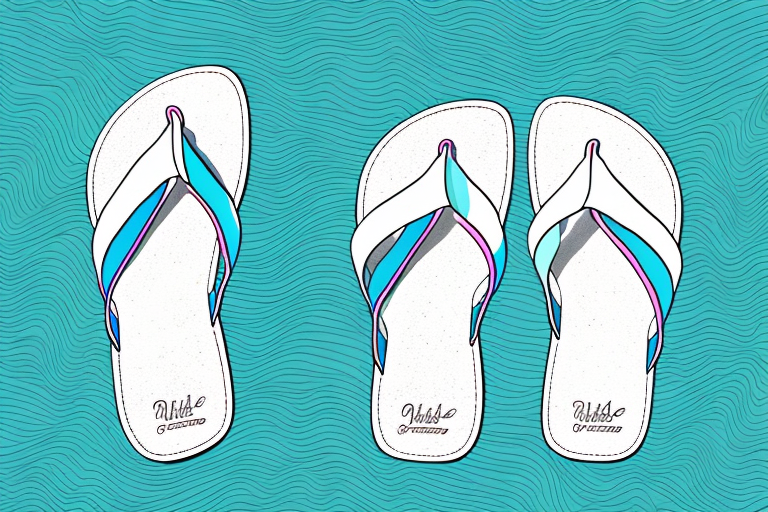Sandals are the perfect accessory for warm-weather outfits, allowing you to showoff your toes and keep cool in the heat. When it comes to sandals, there are two main types: quick-dry sandals and slow-dry sandals. Both types have their own benefits, and understanding the differences between them can help you choose the perfect sandal for your needs.
Benefits of Quick-Dry Sandals
Quick-dry sandals dry quickly on their own, but they also repel water. This makes them great for activities like swimming and snorkeling, where you often find yourself standing in shallow water. The quick-drying properties also prevent the sandals from gathering excess dirt, as it will dry off quickly before it has a chance to settle.
In addition to being great for water activities, quick-dry sandals are also ideal for outdoor activities like hiking and camping. They are lightweight and comfortable, making them perfect for long days spent exploring the outdoors. The quick-drying material also helps to keep your feet dry and comfortable, even in wet conditions.
Benefits of Slow-Dry Sandals
The main benefit of slow-dry sandals is their ability to absorb moisture and keep your feel cool and comfortable. These sandals are often made from breathable materials, such as neoprene, which help draw moisture away from the feet and keep them cool. While slow-dry sandals do take longer to dry, they are extremely comfortable and perfect for activities like exercising or walking long distances.
In addition to their breathability, slow-dry sandals are also designed to provide extra cushioning and support for your feet. This makes them ideal for activities that require a lot of standing or walking, as they help to reduce fatigue and discomfort. The materials used in slow-dry sandals are also designed to be lightweight and flexible, making them perfect for activities like running or hiking.
Comparison of Performance
When it comes to performance, both types of sandals have their own benefits. Quick-dry sandals are great for activities that involve getting wet, such as swimming or snorkeling, as they dry quickly and repel water. Meanwhile, slow-dry sandals are ideal for activities that involve lots of standing or walking, as they are made from breathable materials that keep your feet comfortable and cool no matter how long you’re on your feet.
Quick-dry sandals are also great for outdoor activities, as they are lightweight and provide good grip on slippery surfaces. Slow-dry sandals, on the other hand, are perfect for everyday wear, as they are stylish and provide good arch support. Both types of sandals are also easy to clean and maintain, making them a great choice for any activity.
Durability Comparison
Both types of sandals are highly durable and can last for many years with proper care. Quick-dry sandals are especially durable as they are made from materials that are resistant to water damage and fading from the sun. Slow-dry sandals, on the other hand, are made from thicker materials that provide added protection and durability.
Cost Analysis
The cost of quick-dry and slow-dry sandals varies depending on the quality and brand. Generally speaking, quick-dry sandals tend to be slightly more expensive due to the materials used to create them. However, both types of sandals offer similar levels of durability and can provide years of comfortable wear.
Style Options for Quick-Dry and Slow-Dry Sandals
When it comes to style options, both quick-dry and slow-dry sandals come in a variety of colors and designs to suit any aesthetic. Quick-dry sandals are often made using lightweight materials, such as canvas and leather, while slow-dry sandals can be made from heavier materials, such as neoprene or rubber. Whether you prefer the rugged look or something more classy, there is sure to be a sandal that fits your style.
Factors to Consider When Choosing a Type of Sandal
When choosing between quick-dry and slow-dry sandals, it’s important to consider how they will be used. If you’ll be spending time in the water or walking in wet conditions, quick-dry sandals may be your best option. On the other hand, if you want a pair of sandals for everyday wear or exercising, slow-dry sandals may be more appropriate. It’s also important to consider the style and cost of the sandal.
Care Instructions for Quick-Dry and Slow-Dry Sandals
Taking care of your quick-dry and slow-dry sandals will help them last longer. Quick-dry sandals should be washed with mild soap and water, and then air-dried. Slow-dry sandals should be wiped down with a damp cloth after being worn in wet conditions. Both types of sandals should be treated with a waterproofing spray from time to time to prevent them from becoming too damaged in wet weather.
When it comes to choosing between quick-dry and slow-dry sandals, it’s important to consider the activity you’ll be doing and the style you prefer. Both types of sandals come with plenty of benefits, so finding the right pair for your needs is key. Do some research, compare your options, and find the perfect pair of sandals that will keep you feeling cool and comfortable all summer long!



